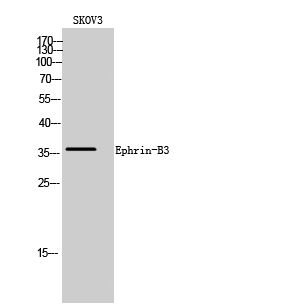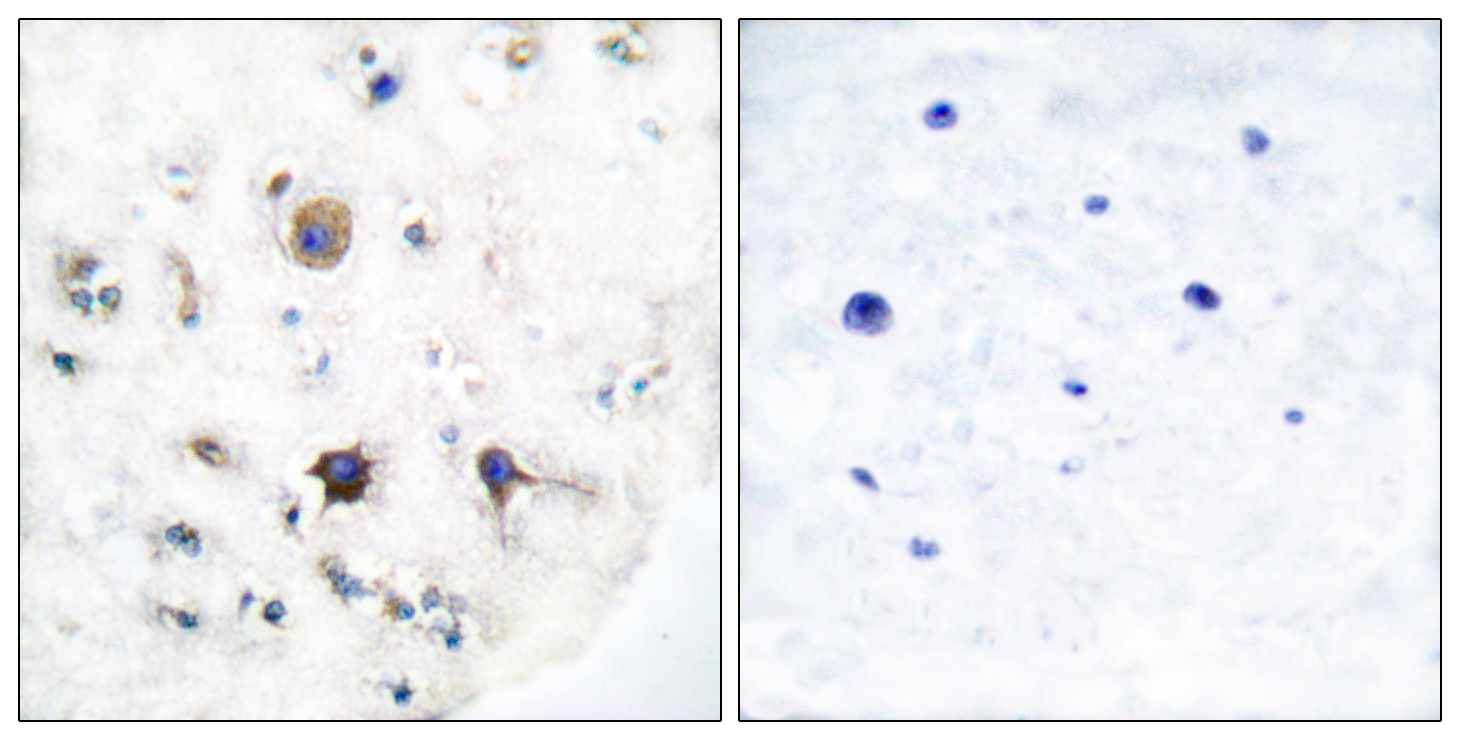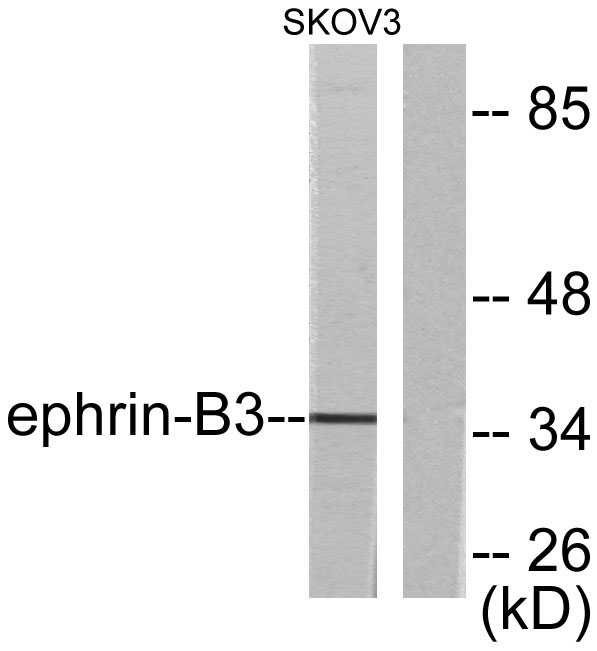Ephrin-B3 Polyclonal Antibody
- Catalog No.:YT1596
- Applications:WB;IHC;IF;ELISA
- Reactivity:Human;Mouse;Rat
- Target:
- Ephrin-B3
- Fields:
- >>Axon guidance
- Gene Name:
- EFNB3
- Protein Name:
- Ephrin-B3
- Human Gene Id:
- 1949
- Human Swiss Prot No:
- Q15768
- Mouse Gene Id:
- 13643
- Mouse Swiss Prot No:
- O35393
- Immunogen:
- The antiserum was produced against synthesized peptide derived from human EFNB3. AA range:221-270
- Specificity:
- Ephrin-B3 Polyclonal Antibody detects endogenous levels of Ephrin-B3 protein.
- Formulation:
- Liquid in PBS containing 50% glycerol, 0.5% BSA and 0.02% sodium azide.
- Source:
- Polyclonal, Rabbit,IgG
- Dilution:
- WB 1:500 - 1:2000. IHC 1:100 - 1:300. ELISA: 1:20000.. IF 1:50-200
- Purification:
- The antibody was affinity-purified from rabbit antiserum by affinity-chromatography using epitope-specific immunogen.
- Concentration:
- 1 mg/ml
- Storage Stability:
- -15°C to -25°C/1 year(Do not lower than -25°C)
- Other Name:
- EFNB3;EPLG8;LERK8;Ephrin-B3;EPH-related receptor transmembrane ligand ELK-L3;EPH-related receptor tyrosine kinase ligand 8;LERK-8
- Observed Band(KD):
- 36kD
- Background:
- EFNB3, a member of the ephrin gene family, is important in brain development as well as in its maintenance. Moreover, since levels of EFNB3 expression were particularly high in several forebrain subregions compared to other brain subregions, it may play a pivotal role in forebrain function. The EPH and EPH-related receptors comprise the largest subfamily of receptor protein-tyrosine kinases and have been implicated in mediating developmental events, particularly in the nervous system. EPH Receptors typically have a single kinase domain and an extracellular region containing a Cys-rich domain and 2 fibronectin type III repeats. The ephrin ligands and receptors have been named by the Eph Nomenclature Committee (1997). Based on their structures and sequence relationships, ephrins are divided into the ephrin-A (EFNA) class, which are anchored to the membrane by a glycosylphosphatidylinositol linkage, and the
- Function:
- function:May play a pivotal role in forebrain function. Binds to, and induce the collapse of, commissural axons/growth cones in vitro. May play a role in constraining the orientation of longitudinally projecting axons.,similarity:Belongs to the ephrin family.,subunit:Interacts with GRIP1 and GRIP2. Binds to Nipah virus G protein.,tissue specificity:Highly expressed in brain; expressed in embryonic floor plate, roof plate and hindbrain segments.,
- Subcellular Location:
- Membrane; Single-pass type I membrane protein.
- Expression:
- Highly expressed in brain; expressed in embryonic floor plate, roof plate and hindbrain segments.
- June 19-2018
- WESTERN IMMUNOBLOTTING PROTOCOL
- June 19-2018
- IMMUNOHISTOCHEMISTRY-PARAFFIN PROTOCOL
- June 19-2018
- IMMUNOFLUORESCENCE PROTOCOL
- September 08-2020
- FLOW-CYTOMEYRT-PROTOCOL
- May 20-2022
- Cell-Based ELISA│解您多样本WB检测之困扰
- July 13-2018
- CELL-BASED-ELISA-PROTOCOL-FOR-ACETYL-PROTEIN
- July 13-2018
- CELL-BASED-ELISA-PROTOCOL-FOR-PHOSPHO-PROTEIN
- July 13-2018
- Antibody-FAQs
- Products Images

- Western Blot analysis of SKOV3 cells using Ephrin-B3 Polyclonal Antibody

- Immunohistochemistry analysis of paraffin-embedded human brain tissue, using EFNB3 Antibody. The picture on the right is blocked with the synthesized peptide.

- Western blot analysis of lysates from SKOV3 cells, using EFNB3 Antibody. The lane on the right is blocked with the synthesized peptide.



